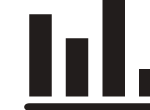
Industrial designer specialising in ergonomics
Description
Industrial designers specialising in ergonomics detect and create industrial design projects, primarily of a corrective nature, with the aim of improving products or spaces for users. Projects are the result of observing individuals interacting with and using these products and spaces and detecting clear deficiencies, particularly their most biomechanical and personal health aspects. The sectors in which these specialists are most applicable are those ones related to the world of employment (equipment related to working, environmental aspects of light, sound, etc.), computers (hardware and software), transport and automotive industry and, finally, hospital-health and homes. With the arrival of the Act of 1995 on Hygiene and Workplace Health, professionals have emerged such as the workplace health and safety manager, who are responsible for the prevention, correction and adaptation of work systems to the needs of companies' workers. They may or may not be industrial designers. If they are, they can tackle projects for improving products or machines. If not, then this designer will have to be subcontracted to resolve deficiencies that may be present in workplaces, including both working tools and the actual spaces.
Tasks
- Perform an analysis/diagnosis of the problem.
Research and go into greater depth using qualitative techniques to understand the shortcomings of a product or a space and their causes. Start with the troubles and annoyances people have detected who are in contact with a product, its unsatisfactory performance, etc. - Define the project.
After investigating the problems and detecting their causes, define the project for improving the product or space, establishing concrete actions. Define a series of changes in shapes, features, colours, textures, smells, etc. - Carry out the preliminary design project.
The designer proposes various creative axes with different product views, selects and shows different materials and finishes and creates several initial technical concepts, if the product so requires. The materials used for the presentation are illustrations, 3D rendering and the general lines of mapped-out plans, and enough material to define the creative ideas. - Develop the design project.
After selecting the working method, introduce possible retouches and develop the technical project, usually working in a team with other professionals, such as engineers. In this phase, the materials that are generally handed in are detail and overall plans, a technical construction report and volume mockups, if necessary. - Monitor the industrialisation of the project.
The design team supervises industrialisation and manages and executes any possible changes that may be needed. - Evaluate and assess the project.
After the project is finished and the product is in use, an evaluation of the result is normally done to assess its efficacy and improvements.













